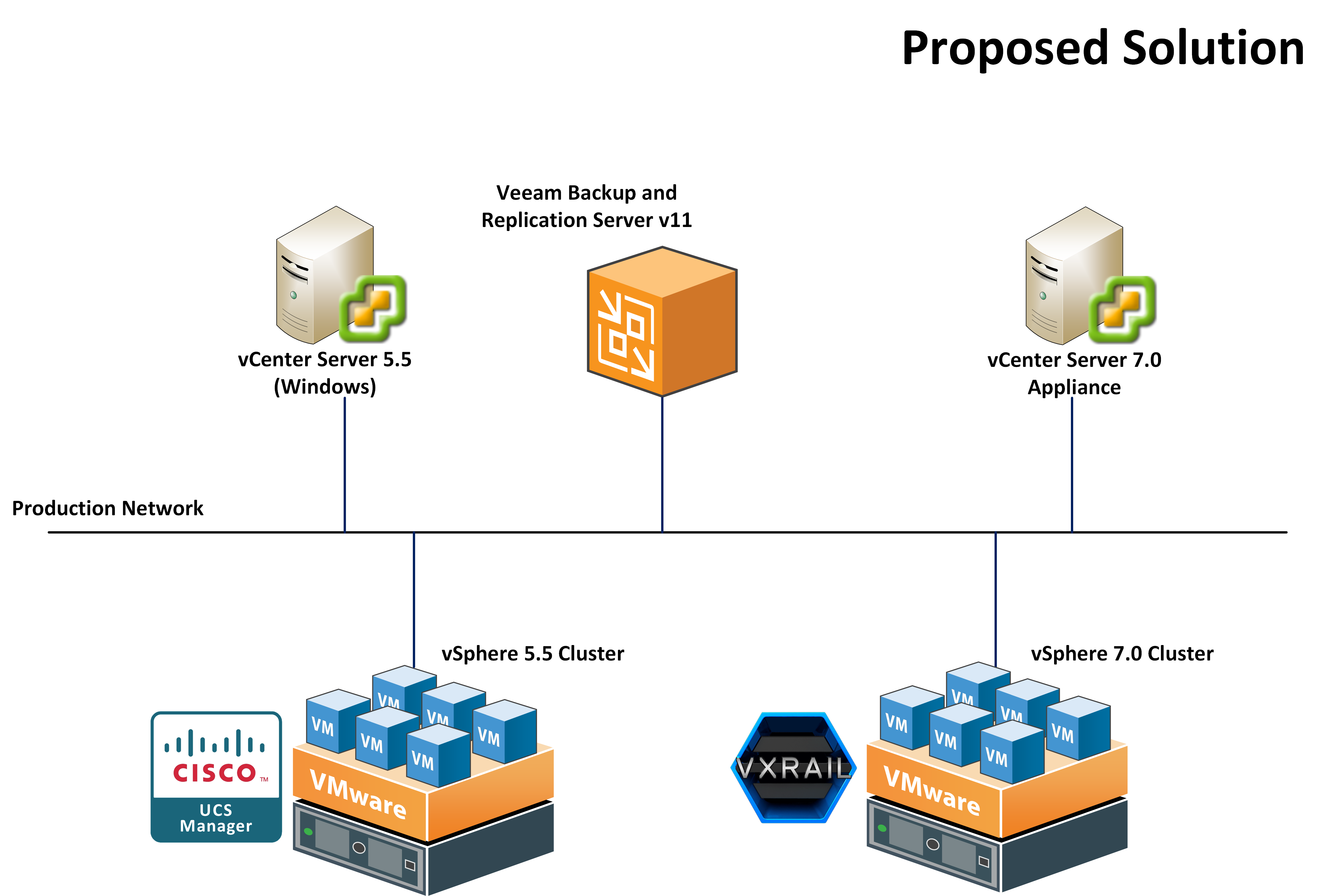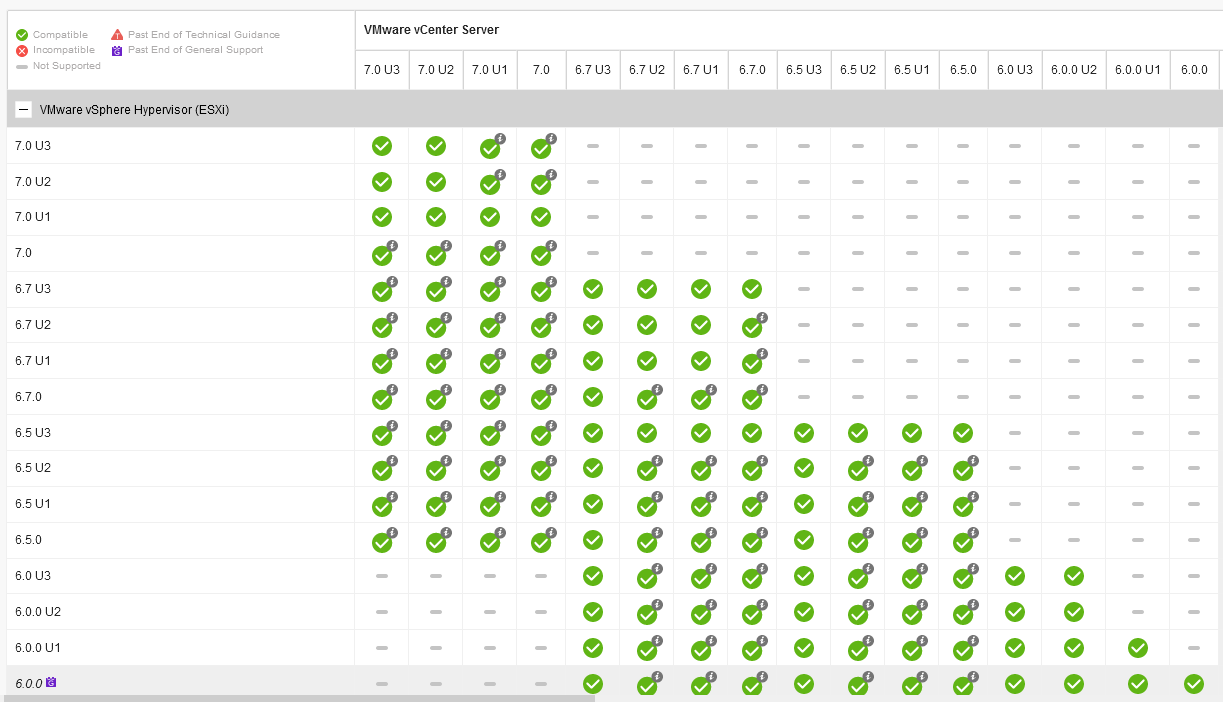Case Scenario
Leverage Veeam VM online replication to migrate VM across different VMware environments
Environment
- VMware ESXi 5.5 (end of supported)
- Cisco UCS enrionment (end of support soon)
- Fibre Channel storage (end of support soon)
- VM Guest: 1000 VM Guests
- Data size: 200TB
Target Plan
- Migrate all VMs into the Hyperconverged Infrastructure platform
Difficulty
- Compatibility issues with ESXi 5.5 and 7.0
- Some dependency problems exist, in-place upgrade to ESXi 7.0 is not supported
- Minimize the service interruption time during the VMs migration
- VMware ESXi 5.5 is already end of support
Migration Approach
- Use Veeam VBR to migrate VMs from different ESXi platform (ESXi 5.5, 6.0, 6.7) to new VM environment (ESXi 7.0).

Advantage
- Use Veeam SureReplica to verify the replica is health after each replication before switching over to ESXi 7.0
- Use planned failover to ensure there is no data loss after switch over to new ESXi 7.0 environment.
- No production impact during the migration as it is agentless solution.
Summary
This approach also can be used in data center relocation.







